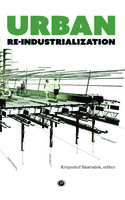Urban Re-Industrialization
Contributor(s)
Nawratek, Krzysztof (editor)
Collection
ScholarLedLanguage
EnglishAbstract
Urban re-industrialisation could be seen as a method of increasing business effectiveness in the context of a politically stimulated ‘green economy’; it could also be seen as a nostalgic mutation of a creative-class concept, focused on 3D printing, ‘boutique manufacturing’ and crafts. These two notions place urban re-industrialisation within the context of the current neoliberal economic regime and urban development based on property and land speculation. Could urban re-industrialisation be a more radical idea? Could urban re-industrialization be imagined as a progressive socio-political and economic project, aimed at creating an inclusive and democratic society based on cooperation and a symbiosis that goes way beyond the current model of a neoliberal city? In January 2012, against the backdrop of the 2008 financial crisis, Krzysztof Nawratek published a text in opposition to the fantasy of a ‘cappuccino city,’ arguing that the post-industrial city is a fiction, and that it should be replaced by ‘Industrial City 2.0.’ Industrial City 2.0 is an attempt to see a post-socialist and post-industrial city from another perspective, a kind of negative of the modernist industrial city. If, for logistical reasons and because of a concern for the health of residents, modernism tried to separate different functions from each other (mainly industry from residential areas), Industrial City 2.0 is based on the ideas of coexistence, proximity, and synergy. The essays collected here envision the possibilities (as well as the possible perils) of such a scheme.
Keywords
urban planning; industrialization; architecture; design theory; green economyDOI
10.21983/P3.0176.1.00ISBN
9781947447035, 9781947447028OCN
1047624246Publisher
punctum booksPublisher website
https://punctumbooks.com/Publication date and place
Brooklyn, NY, 2017Classification
Urban and municipal planning and policy


 Download
Download